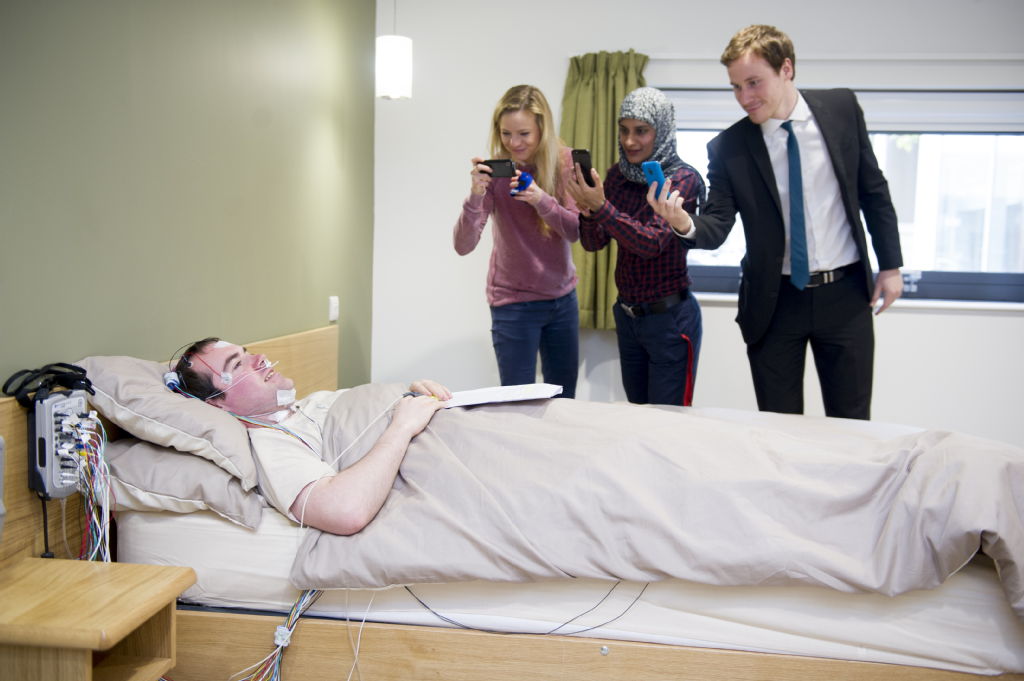News
Highly commended poster rosette awarded to work by Esther Afolalu and Fatanah Ramlee
Reliability of conditioned pain modulation in a healthy population: investigating the influence of distraction, pain catastrophizing, and sleep
Esther F. Afolalu*, Fatanah Ramlee, Nicole K.Y. Tang
Department of Psychology, University of Warwick, UK.
Background
Conditioned Pain Modulation (CPM) has been found to be impaired in a range of chronic pain conditions and is commonly thought to be a key clinical marker of central pain inhibitory processes. However, to what extent CPM could be explained and influenced by other psychophysiological variables (e.g., distraction, pain catastrophizing and sleep) has not been systematically studied.
There is also an urgent need to establish CPM as a dependable biomarker of individual difference in pain perception and pain response.
Aims
This current study aimed to assess the reliability and differences between two conditioning stimuli to elicit CPM responses; a standard experimental pain inducing stimulus (cold pressor task) compared to a real-life back pain-inducing stimulus (bag holding task). In addition, we evaluated the independent influence of cognitive distraction, pain catastrophizing, and subjective sleep disruptions on CPM response.
Methods
The study consisted of two experiments with healthy young adults (Experiment 1: n = 57, 84.2% females, mean age 19.4 years; Experiment 2: n = 118, 79.7% females, mean age 19.5 years). Participants underwent two identical quantitative sensory testing (QST) sessions a week apart and completed the pain catastrophizing scale and daily sleep diary in-between. QST was carried out to assess CPM response - Pressure Pain Threshold (PPTh) assessed on the right upper shoulder/forearm alongside two conditioning stimuli to induce pain on the contralateral side of the body: Cold Pressor Task and Bag Holding Task (novel means of inducing musculoskeletal pain in the back). CPM was calculated as % change in PPTh during conditioning stimulus relative to baseline PPTh. Experiment 2 also included two additional distractor conditioning stimuli (attention demanding cognitive tasks) similar in design to the cold pressor and bag holding task to examine distraction effects.
Results
Pressure pain threshold with cold pressor stimulus showed the strongest and most reliable CPM response. Bag holding stimulus showed the weakest CPM response as the pain elicited by the task may not be enough to engage CPM response in this sample of healthy participants. Cognitive distraction also had some effect on pain inhibition; the distraction tasks elicited CPM response but less magnitude (11%) compared to the cold pressor stimulus (29%). There was also some evidence for the influence of pain catastrophizing and sleep – few participants showing impaired pain inhibitory responses (CPM non-responders) reported greater pain catastrophizing and more subjective sleep disruptions compared to CPM responders.
Conclusion
The current study provides further support for CPM as a robust physiological mechanism independent of cognitive processes. The findings also provide preliminary evidence that less efficient CPM response may be associated with pain catastrophizing and subjective day-to-day sleep disruptions. This could have implications for our understanding of pain assessment and pain processing in healthy individuals and clinical populations with chronic pain.
*Presenting author’s contact details:
Esther F. Afolalu
E-mail: e.f.afolalu@warwick.ac.uk
Department of Psychology, University of Warwick,
Coventry, CV4 7AL, United Kingdom.
Phone: +44 (0)24 765 28294

